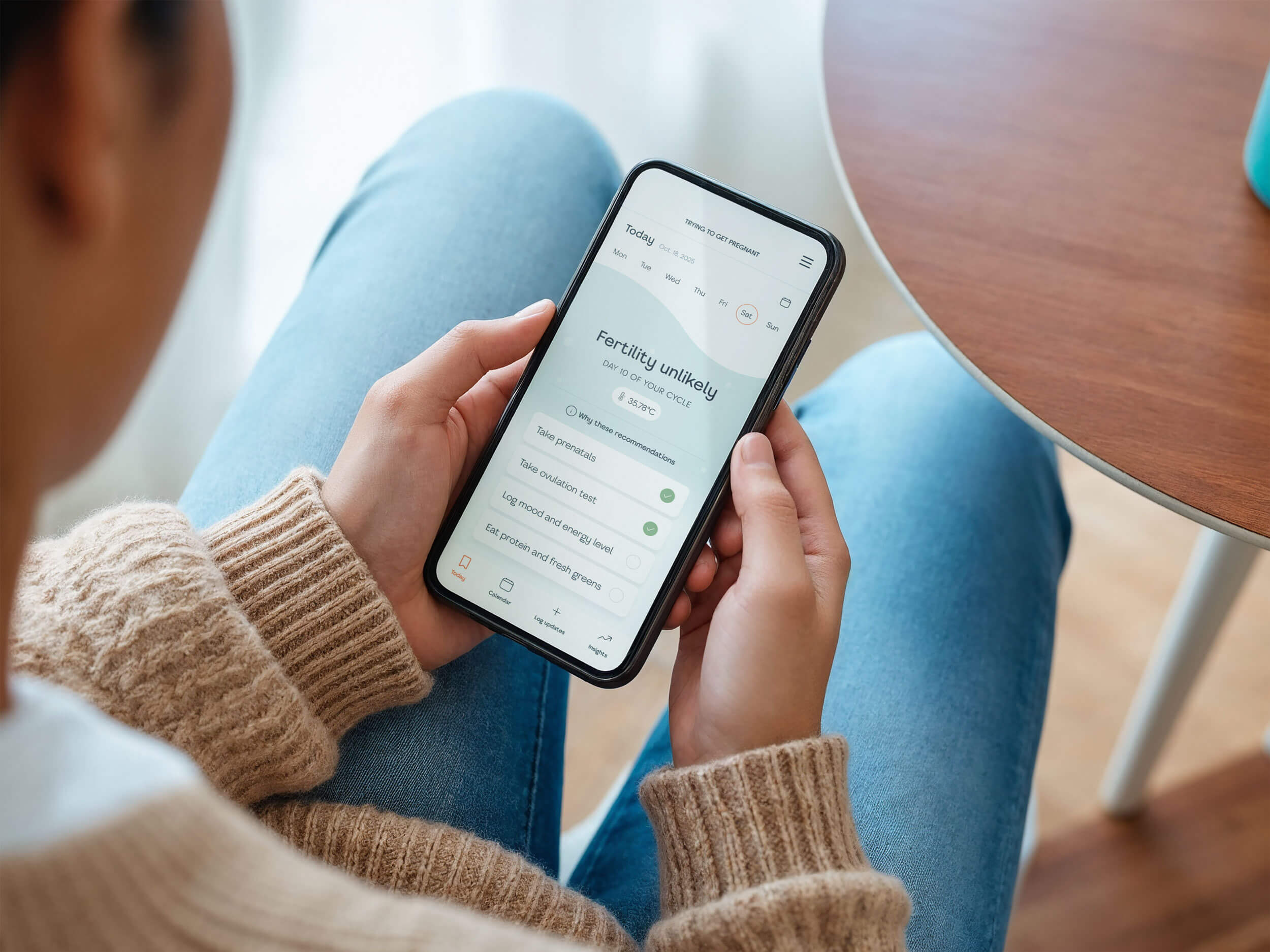Link copied to clipboard

There’s a reason people hesitate before downloading another period tracker or fertility app.
It’s not because they don’t need it. It’s because they don’t trust it.
The femtech industry has a massive trust problem, and design has a lot to do with it.
When every app looks and feels the same, users don’t just assume you’re professional.They assume you’re collecting their data.
And can you blame them?
After years of headlines about apps selling sensitive reproductive health data, women are more skeptical than ever. If your app’s tone, layout, or visuals feel even remotely “corporate startup” instead of “personal health companion,” users won’t even give you a chance to prove you’re different.
Let’s unpack what’s going on, and how to fix it.
Using templates isn’t the problem. A lot of startups do, and that's okay.
The problem starts when the experience still feels like a template — when nothing about it reflects who it’s for or what it stands for.
In femtech, that’s a big deal. Users are sharing deeply personal information, and they notice when something feels off. If your visuals, tone, or onboarding screens look like they could belong to any other app, it creates a small but powerful moment of doubt.
That doubt grows when the app is already asking for sensitive information before giving anything back.
What builds trust instead:
When your app reflects a clear understanding of your audience: how they speak, what they need, and how they want to feel. That shows up in small but important ways:
If you’re using a template, take the time to make it yours. Customize the visuals, tweak the tone, and add thoughtful details that make users feel seen.
Sometimes it’s not about trust. It’s about effort.
When a new user opens your app and faces twenty questions about their body, habits, and health history before even seeing what the app can do, it feels like an interrogation.
The problem isn’t that you need data. It’s that the value of sharing it isn’t clear yet.
If users don’t understand what they’ll get in return, the process feels tedious and one-sided. The perceived benefit has to be much higher than the effort it takes to provide information.
Instead of overwhelming users right away, think about how you can make onboarding feel lighter and more mutual. Show small wins early, and gather more information gradually once users have seen what your app can offer.
When the process feels collaborative instead of extractive, people are more likely to stay, share, and trust what comes next.
In femtech, tone matters as much as accuracy.
A lot of products try to sound credible by using medical language, but that often ends up creating distance. It reminds users of the same systems that already make their experiences feel clinical and impersonal.
Sounding scientific doesn’t automatically build trust. Sometimes it has the opposite effect. When people open a health app, they want to feel informed, not examined.
The tone that works best depends on context, whether it’s postpartum care, fertility, cycle tracking, or menopause. Each calls for different levels of sensitivity and detail. But across all of them, the goal is the same: to communicate care through clarity.
When users feel like the app is speaking to them, not at them, they’re more likely to keep engaging and to believe the information they see.
Privacy has become the biggest trust filter in femtech.
People don’t expect to read every detail of your privacy policy, but they do notice how your product makes them feel about their data.
When an app asks for sensitive information without clearly showing what happens next, users hesitate. They might not be able to explain why, but something feels off. It’s the quiet kind of uncertainty that makes people close the app and never come back.
Transparency doesn’t have to mean long explanations. Sometimes it’s as simple as creating small signals of safety, reminders that users are in control, that their information stays private, and that they can change their mind.
When people feel protected, they’re more open to sharing. When they don’t, no feature or incentive will make up for that missing sense of security.
Trust isn’t built by privacy policies or consistent UX patterns alone. It’s built through how your product makes people feel.
When someone opens your app for the first time, they’re looking for a signal that it understands them. Not just what they need to do, but what they might be feeling in that moment, whether that’s curiosity, hope, anxiety, or exhaustion.
Every detail contributes to that feeling: the words, the colours, the pacing, even how much space you give users to breathe before asking for more.
When people feel seen and respected, they stay. When they feel rushed, exposed, or treated like data, they leave.
Trust doesn’t come from how polished your app looks. It comes from the feeling that someone thought about the person behind the data.
That’s what turns a functional product into something people choose to keep using.
.jpg)
.jpg)
.jpg)